The Gist: Navigating a workplace accident claim in Austin requires strategic legal support to overcome Texas’s complex workers’ compensation system and secure the maximum benefits you deserve.
Workplace injuries in Austin come with unique hurdles, especially since Texas doesn’t require employers to carry workers’ compensation insurance. Tight filing deadlines and pushback from employers or insurers can jeopardize valid claims.
Without a lawyer, key evidence may be lost and full compensation overlooked. A skilled workplace accident attorney helps you build strong documentation, meet deadlines, and counter tactics meant to downplay your injury.
They’ll assess your case to uncover all recovery options—including third-party claims—especially in cases involving permanent injuries or employer negligence.
Workplace accidents can impact more than just medical bills—they can affect your livelihood. Acting quickly to secure legal representation can greatly improve your chance of getting the compensation you deserve.
Key Highlights
- A lawyer helps you navigate Austin’s complex workplace claim process, ensuring you meet critical deadlines—like the 30-day injury notification requirement.
- When employers push back or dispute your claim, legal representation protects your rights, especially during challenges to medical causation.
- Attorneys know how to maximize your compensation by strategically negotiating with insurance companies for the best possible settlement in your Austin case.
- With expert legal support, you’ll have comprehensive evidence collection, strengthening your claim through detailed medical records and witness statements.
- Lawyers significantly improve outcomes during hearings and appeals, guiding you through Benefit Review Conferences and any necessary judicial reviews.
Understanding Workplace Injuries in Austin
Quick Take: Austin’s workplace injury landscape reveals concerning trends, especially in the public sector where rates reach 5.88 cases per 100 workers—double the national average. Construction workers, outdoor personnel, and maintenance staff face heightened risks from falls, heat exposure, and equipment hazards, highlighting the critical need for industry-specific safety protocols. Legal representation is crucial for injured workers to ensure their rights are protected throughout the claims process.
Austin’s employment ecosystem presents unique workplace safety challenges that demand targeted attention. Industries like construction and public administration consistently report higher injury rates, with specific hazards like falls, overexertion, and machinery accidents leading to severe physical consequences including fractures, traumatic injuries, and even permanent disability. These patterns reflect both the city’s rapid growth and the diverse nature of its workforce across multiple sectors.
As a result, understanding the geography of risk across Austin’s industries becomes essential for both employers and workers navigating the local job market. The significant disparity between Texas’s overall workplace injury rate (1.8 per 100 workers) and Austin’s public sector rate (5.88 per 100 workers) reveals how aggregate statistics often mask sector-specific dangers that require specialized prevention strategies.
The most prevalent workplace hazards in Austin include: falls from heights in construction sites, heat-related illnesses among outdoor workers during Texas summers, repetitive motion injuries in manufacturing and office environments, vehicle accidents among delivery and transportation workers, and equipment-related injuries during maintenance operations.
- Construction workers face a 1-in-5 chance of suffering a serious workplace injury during their career in Austin’s booming building sector.
- Heat exposure creates a 35% higher risk of workplace incidents during summer months (June-September) compared to winter periods.
- Back injuries account for nearly 40% of all workers’ compensation claims filed in the Austin metro area.
- Public administration employees experience twice the national average rate of slip-and-fall accidents.
- Maintenance personnel working with machinery face a 63% higher risk of crush injuries or amputations compared to other roles.
Developing effective workplace safety strategies requires acknowledging both the statistical realities and human costs of these injuries. Prevention efforts must be customized to address Austin’s unique risk profile rather than applying generic national protocols.
By implementing industry-specific training, regular safety audits, and injury response protocols tailored to local conditions, employers can significantly reduce incidents while protecting their most valuable asset—their workforce. Additionally, seeking guidance from an experienced personal injury attorney can help injured workers navigate the claims process and maximize their compensation.
Steps to File a Claim After an Accident
The Gist: Navigating a workplace injury claim in Austin requires specific steps to secure your benefits. You must notify your employer within 30 days, submit the DWC Form-041 within a year, and provide comprehensive documentation including medical records and pay verification. Following these procedures correctly protects your right to compensation.
After experiencing a workplace injury, your immediate actions can significantly impact your claim’s success. Taking deliberate steps within the required timeframes ensures your rights remain protected under Texas workers’ compensation laws. As a result, understanding both the notification requirements and documentation process becomes essential for injured workers seeking fair treatment. Additionally, having a clear understanding of economic damages can help you better assess the compensation you may be entitled to.
The complexity of workplace injury claims often catches employees off-guard during an already stressful recovery period. That’s why organizing your approach methodically can transform an overwhelming process into a manageable sequence of actions. Over time, successful claimants develop comprehensive documentation habits that substantiate their case and expedite benefits approval.
The documentation process requires several critical components:
- Medical records with clear causation statements linking your injury to specific workplace activities
- Detailed incident reports containing the date, time, location, and circumstances of the accident
- Employment verification including recent pay stubs to calculate accurate benefit amounts
Witness statements that corroborate your account of the workplace incident - Follow-up treatment plans and ongoing medical assessments documenting your recovery progress
- Correspondence with insurance adjusters and claim administrators regarding your case
Filing your claim represents more than a procedural requirement—it’s the foundation of your financial security during recovery. Electronic submission through the TDI-DWC portal offers confirmation receipts and faster processing compared to mail options.
Always verify that your employer has properly notified their insurance carrier within seven days, as this communication gap frequently causes preventable delays in benefit disbursement. Additionally, having legal representation can significantly enhance your chances of receiving fair compensation throughout the claims process.
Common Challenges in Securing Compensation
Quick Take: Securing fair compensation for workplace injuries in Austin involves navigating a maze of deadlines, disputed claims, and complex legal requirements. Understanding these challenges upfront—from strict notification periods to employer resistance tactics—dramatically increases your chances of receiving the benefits you deserve while protecting your rights throughout the process.
Workplace injury claims in Austin often face systematic resistance from employers and insurance companies looking to minimize their financial exposure. As a result, what should be a straightforward process to help injured workers recover becomes an adversarial struggle requiring precise documentation and strategic advocacy. These obstacles don’t emerge by accident—they reflect deliberate systems designed to discourage claims or reduce payout amounts.
Over time, successful claimants have learned that preparation and professional guidance significantly improve outcomes when facing these challenges. That’s why understanding the specific barriers you’ll encounter—whether dealing with non-subscriber employers, third-party liability issues, or aggressive surveillance tactics—becomes essential for developing an effective compensation strategy tailored to your situation.
The four major roadblocks that typically derail workplace injury claims include:
- Rigid reporting timelines requiring injury notification within 30 days and formal claims within one year, after which your rights may be permanently forfeited
- Medical causation disputes where insurers attempt to attribute injuries to pre-existing conditions or non-work activities despite clear workplace causes
- Employer retaliation tactics including surveillance, negative performance reviews, or creating hostile work environments to pressure claim withdrawal
- Texas-specific coverage complications arising from the state’s unique optional workers’ compensation system, leaving many injured workers without standard protections
The complexity of these challenges reveals why workplace injury claims require a strategic approach rather than simply filling out forms. Understanding the procedural landscape transforms your position from reactive to proactive, allowing you to anticipate resistance points before they derail your claim. With proper documentation, timely action, and appropriate legal guidance, these common obstacles become manageable steps in your journey toward fair compensation rather than insurmountable barriers.
Key Evidence Needed for a Strong Case
Quick Take: Following a workplace injury in Austin, gathering comprehensive evidence becomes your lifeline to fair compensation. Medical documentation, accident reports, witness statements, and proof of employer negligence create the foundation of a successful claim, while detailed personal records and regulatory compliance evidence strengthen your position against insurance pushback.
Navigating the aftermath of a workplace injury requires strategic evidence collection that goes beyond basic documentation. The strength of your workers’ compensation claim directly correlates with the quality and comprehensiveness of evidence you present, particularly when insurance companies actively look for reasons to minimize or deny benefits. As a result, understanding exactly what evidence carries the most weight can dramatically alter the trajectory of your case.
That’s why injured workers must approach evidence gathering methodically from day one. Over time, memories fade, witnesses relocate, and critical documentation becomes harder to obtain—making early and thorough collection essential for establishing a clear causation narrative. The most successful claims feature multi-layered evidence that creates an undeniable connection between workplace conditions and the resulting injury or illness.
Your evidence arsenal should include: medical records that establish injury severity, workplace incident reports documenting the accident circumstances, photographic evidence of hazardous conditions, witness testimonies providing third-party verification, employer safety violation documentation highlighting negligence, wage statements proving income loss, and detailed personal journals tracking recovery progress and limitations.
- Contemporaneous medical documentation with specific injury descriptions, treatment recommendations, and work restrictions
- Time-stamped incident reports with detailed accounts of how, when, and where the injury occurred
- Expert testimony from safety specialists who can identify regulatory violations or industry standard breaches
- Digital evidence including surveillance footage, equipment maintenance logs, or internal communications about safety concerns
- Documentation of previous similar incidents or complaints that establish a pattern of employer negligence
- Chronological treatment records showing consistent medical care and compliance with prescribed therapy
The strategic compilation of evidence transforms your case from a contestable claim to a compelling narrative that demands appropriate compensation. Insurance adjusters and administrative judges respond to thorough documentation that leaves little room for alternative interpretations or doubt. Without comprehensive evidence, injured workers face an uphill battle against experienced insurance defense teams trained to exploit documentation gaps and inconsistencies in your account of events.
How Legal Expertise Boosts Your Claim
Quick Take: Legal representation transforms workplace injury claims in Austin from uncertain processes to structured pathways toward maximum compensation. Attorneys leverage specialized knowledge of Texas workers’ compensation laws to properly value claims, document injuries comprehensively, and negotiate effectively with insurers who typically aim to minimize payouts.
Navigating a workplace injury claim without legal expertise often leaves significant compensation on the table. Medical expenses, lost wages, and long-term disability benefits require precise calculation methods that consider the full spectrum of your injury’s impact—both immediate and future. That’s why injured workers who secure legal representation typically receive settlements 3.5 times larger than those who handle claims independently.
The disparity in outcomes stems from attorneys’ specialized knowledge of Texas-specific compensation structures and insurance company tactics. As a result, legal representation provides not just advocacy but critical expertise in documentation, valuation, and strategic timing of your claim. Without this guidance, claimants frequently accept undervalued settlements, overlooking critical benefits they’re legally entitled to receive.
Legal professionals enhance your claim through several distinct mechanisms:
- Comprehensive wage calculation that captures overtime, performance bonuses, and scheduled raises you would have received
- Strategic timing of medical evaluations to properly document maximum medical improvement
- Access to specialized medical experts who can connect workplace conditions to your specific injury pattern
- Counter-strategies for common insurance tactics like surveillance or misleading recorded statements
- Identification of third-party claims beyond workers’ compensation when equipment failures or contractor negligence contributed
The decision to secure legal representation following a workplace injury represents a critical turning point in recovery. With attorney guidance, the claims process transitions from an adversarial struggle to a methodical pursuit of rightful compensation. This expertise not only maximizes your immediate settlement but protects your long-term financial security by ensuring all potential benefits—from impairment income to vocational rehabilitation—are properly secured and calculated.
Navigating Disputes and Appeals
Quick Take: When Austin workers face denied injury claims or benefit disputes, they must navigate a structured appeal process beginning with informal Benefit Review Conferences and potentially advancing to formal hearings and court reviews. Understanding deadlines, preparation requirements, and securing legal representation significantly increases the likelihood of overturning unfavorable decisions.
Workplace injury claim disputes in Austin follow a carefully structured resolution pathway designed to balance efficiency with fairness. When insurance companies deny claims or offer inadequate benefits, injured workers can initiate the dispute process through the Division of Workers’ Compensation, triggering a sequence of increasingly formal proceedings that provide multiple opportunities for case reconsideration.
As a result, understanding each stage’s unique requirements becomes essential for maximizing your chances of a favorable outcome. The process begins with the relatively informal Benefit Review Conference but can progress through contested hearings and potentially into the court system, with each level demanding more rigorous evidence presentation and procedural knowledge to effectively advocate for your rightful compensation.
The dispute resolution process includes several critical stages:
- Benefit Review Conferences (BRCs) provide a mediator-facilitated discussion to identify issues and explore settlement possibilities without formal court procedures
- Contested Case Hearings function similarly to trials with sworn testimony, evidence submission, and a binding decision from an administrative law judge
- Appeals Panel Reviews offer a secondary administrative evaluation of contested decisions within strict 15-day filing deadlines
- Judicial Review in Travis County district courts becomes available when administrative remedies are exhausted, requiring advanced legal strategy
- Supplementary remedies including subsequent injury fund claims and third-party liability suits may apply in specific circumstances
Successfully navigating this complex system requires both procedural knowledge and strategic thinking about how to present your case effectively at each stage. Experienced legal representation provides not just technical expertise but also advocacy skills that can significantly impact outcomes when dealing with insurance adjusters and administrative judges. Remember that the workers’ compensation system, while challenging, was ultimately designed to protect injured workers’ rights—persistence through the appropriate channels often leads to securing the medical care and financial support you deserve.
Maximizing Damages With Professional Guidance
Quick Take: Navigating Texas workers’ compensation requires strategic legal expertise to maximize your potential recovery. Professional representation ensures accurate benefit calculations, proper documentation of injuries, and leverages industry-specific data to strengthen your claim—transforming a potentially undervalued settlement into comprehensive compensation that reflects your true losses.
After a workplace injury in Austin, the difference between adequate and optimal compensation often hinges on professional legal guidance. The intricate workers’ compensation system in Texas creates numerous opportunities for benefits to be undervalued or overlooked entirely. As a result, injured workers who secure expert representation typically receive settlements that more accurately reflect both their immediate losses and long-term impacts of their injuries.
That’s why strategic advocacy matters at every stage of the claims process. A qualified workers’ compensation attorney doesn’t simply file paperwork—they construct compelling narratives supported by medical evidence, industry statistics, and legal precedents. Over time, this comprehensive approach transforms routine claims into properly valued settlements that account for wage losses, medical expenses, and diminished earning capacity.
Professional representation enhances your claim through:
- Medical evidence optimization that correlates injuries with specific workplace conditions, strengthening causation arguments
- Strategic timing of benefit applications to maximize recovery periods while maintaining income stability
- Expert negotiations with insurance adjusters who recognize the difference between represented and unrepresented claimants
- Documentation of workplace safety violations that establish negligence patterns and support supplemental claims
- Accurate impairment rating challenges when insurance-selected doctors underestimate permanent disabilities
- Future damages projections using vocational experts to quantify lifetime earning impacts
The decision to pursue professional representation often represents a critical turning point for injured workers. By leveraging legal expertise, you position yourself to receive not just standard benefits but the maximum compensation legally available under Texas law. This shift in approach transforms you from passive recipient to empowered claimant, ensuring that your workplace injury doesn’t compromise your financial security or future employment prospects.
In Summary
Essential Insight: Workplace injury claims in Austin require strategic legal navigation to secure fair compensation. With over 2.8 million nonfatal workplace injuries reported nationwide in 2022, these incidents affect thousands of Texas workers annually. Experienced legal representation can transform complex claims processes into manageable steps, helping injured workers overcome insurance barriers and secure the medical care and financial support they deserve during recovery.
Workplace accidents can disrupt every aspect of a person’s life—from finances to family wellbeing. Navigating Texas workers’ compensation laws is tough, especially when you’re already dealing with an injury.
Batrice Law Firm helps Austin workers manage the legal process by reviewing claims, identifying benefits, and building strong, evidence-based strategies. Our blend of legal knowledge and real-world advocacy makes a difference when dealing with insurance adjusters.
After an injury, unexpected hurdles like medical bills and employer pressure often arise. With Batrice Law Firm, injured workers gain a buffer from these stressors and get legal guidance every step of the way. Our support allows clients to focus on recovery while ensuring their claim moves forward. A legal consultation early on can protect your right to full compensation.




